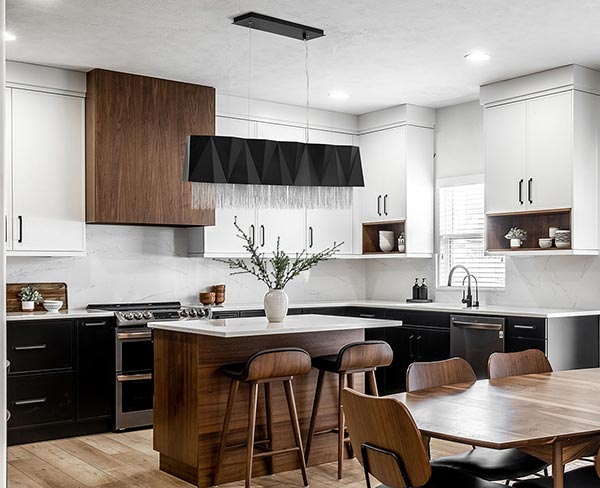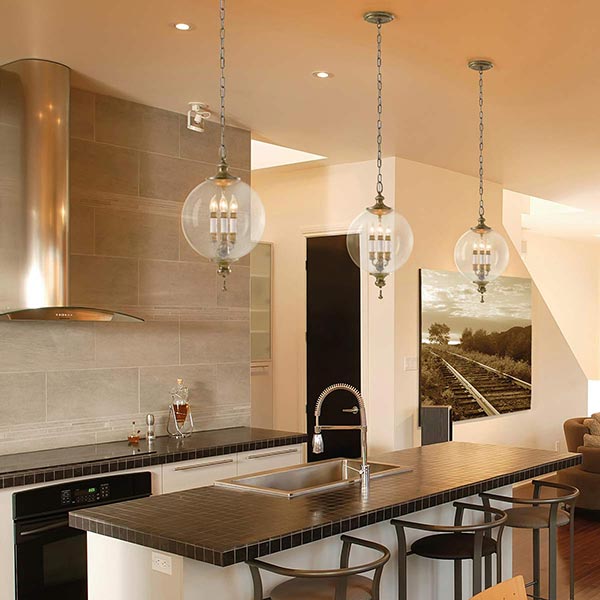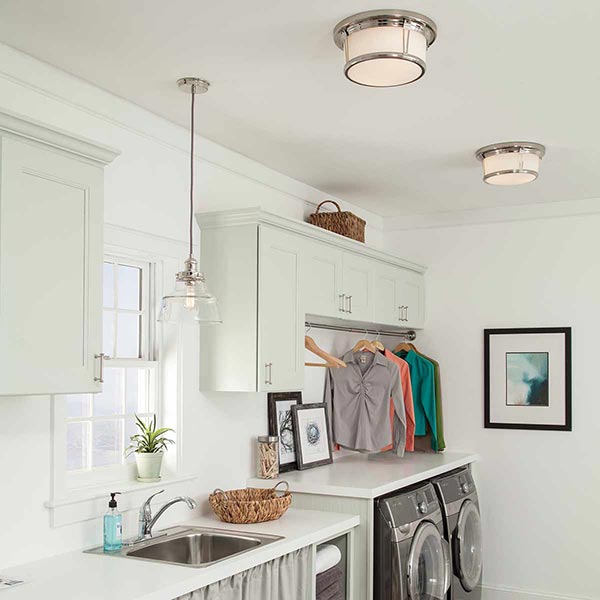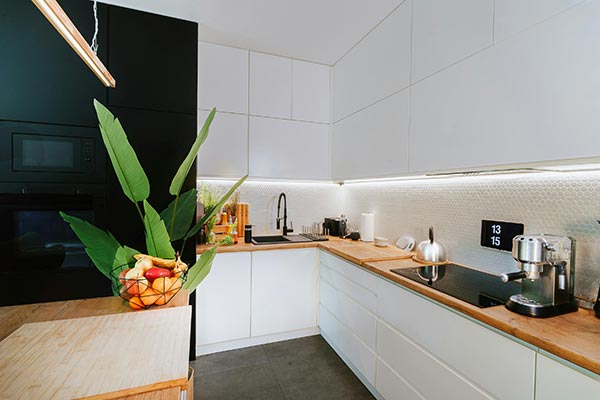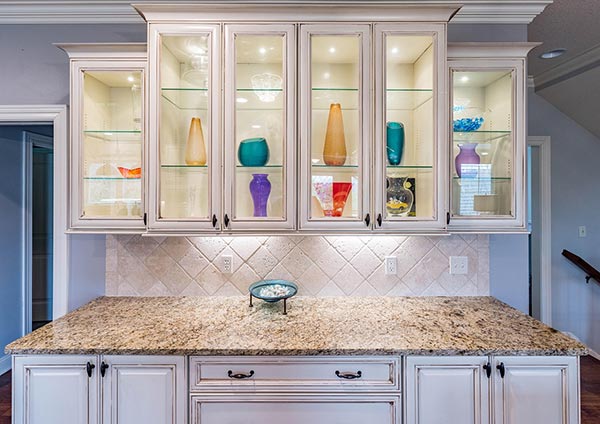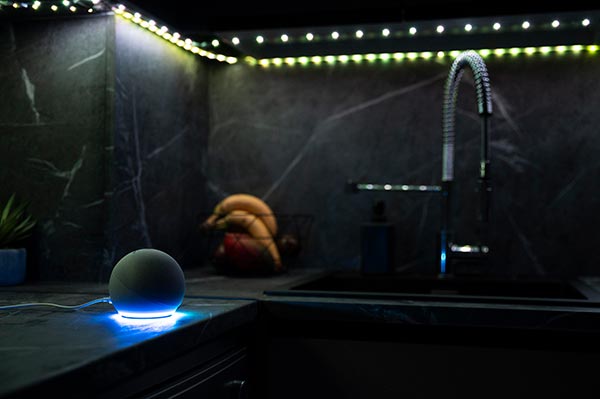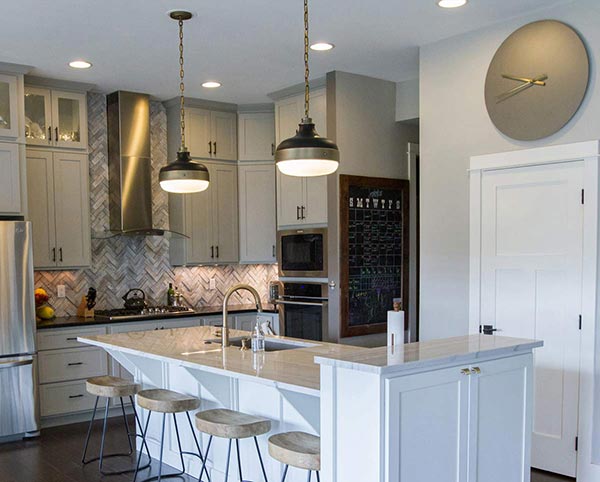Kitchen Lighting Frequently Asked Questions
Q: How many lights do I need in my kitchen?
A: It depends on the layout, ceiling height and natural light, but a good guide is 300–500 lumens per square metre. Use a combination of different lighting types for the best balance.
Q: What’s the best kitchen lighting for under cabinets?
A: LED strip lights or recessed LED lights. They’re compact, bright, and energy-efficient. Choose warm white (2700K–3000K) for a cosy glow or cool white (4000K) for clarity.
Q: Can I install dimmable kitchen lights?
A: Yes, most modern kitchen LED lighting products support dimming. Make sure you use dimmable bulbs and compatible dimmer switches, or go for a smart lighting solution.
Q: How high should pendant lights hang above an island?
A: Ideally 75–90cm above the surface, so they provide optimal illumination for tasks like food preparation while maintaining a clear line of sight.
Q: Are LED batten lights better than fluorescent tubes?
A: Definitely. LED battens are brighter, flicker-free, and more eco-friendly. They use less energy and last far longer than traditional fluorescents.
Expert Tips for Designing Kitchen Lighting
- Layer your lighting – Combine general, task, accent and ambient lighting for a flexible and stylish space.
- Use smart controls – Great for open-plan layouts and mood-setting. Experiment with smart bulbs, dimmers, or app-based systems.
- Balance natural and artificial light – Position task and ceiling lights where natural daylight fades, especially in north-facing or windowless kitchens.
- Eco tip: Choose eco-friendly kitchen lighting solutions like energy-efficient LED ceiling lights and low-energy under-cabinet LEDs to reduce consumption and lower your bills.
Still Need Help? Talk to Our Experts
Still not sure what lights go where? We’re here to help! Our friendly UK-based team offers expert advice, whether you’re updating your kitchen or planning a full redesign.
Call us on 0151 650 2138 or Contact Us for honest, no-pressure advice.
Or browse our full Kitchen Lighting Range to discover stylish, energy-efficient lighting at prices you’ll love.
Ready to light up your kitchen? Let’s make your dream kitchen shine, stylishly, efficiently and affordably.
Shop Kitchen Lighting
